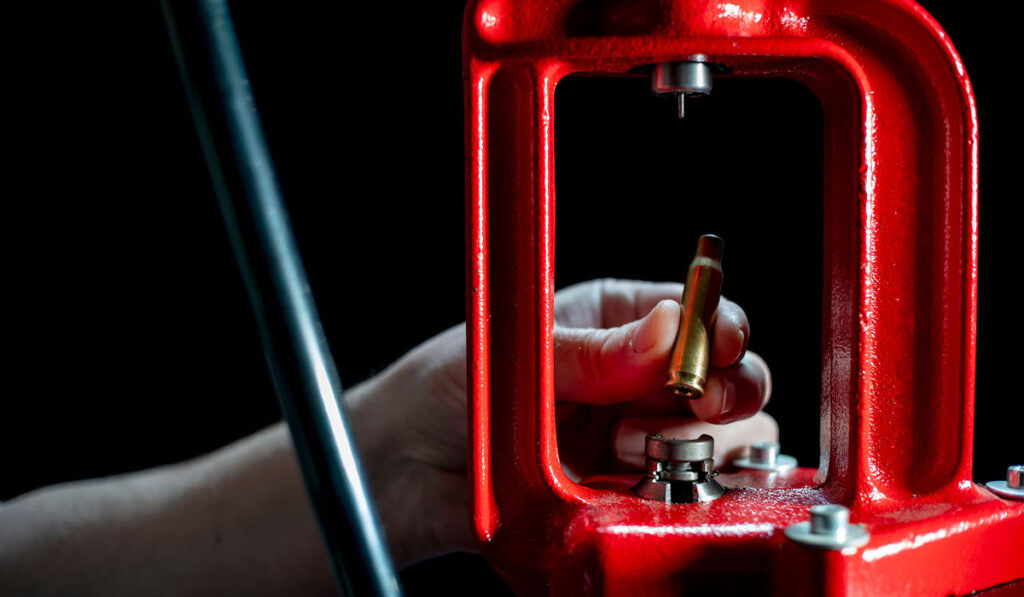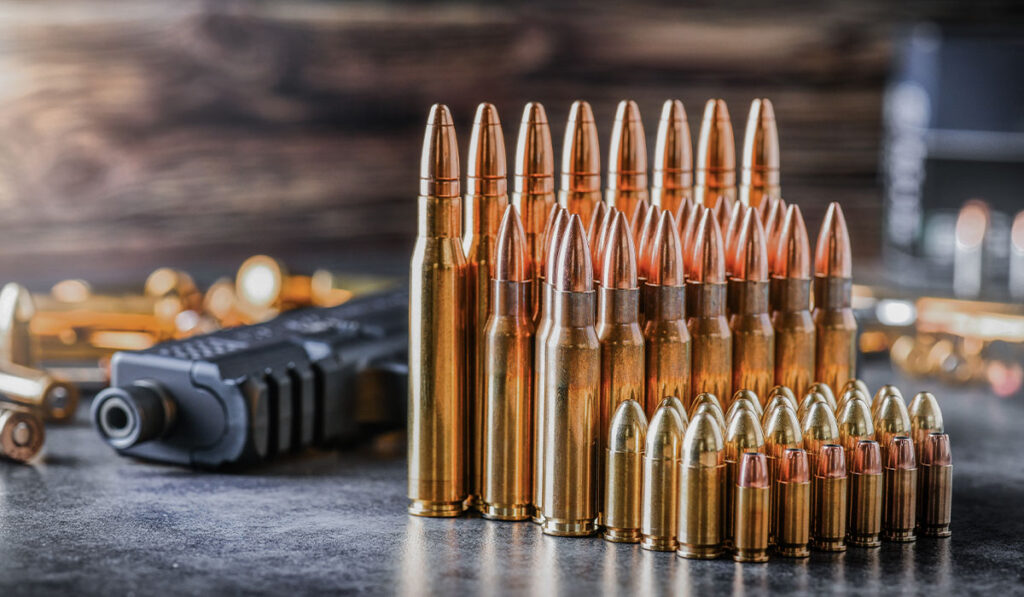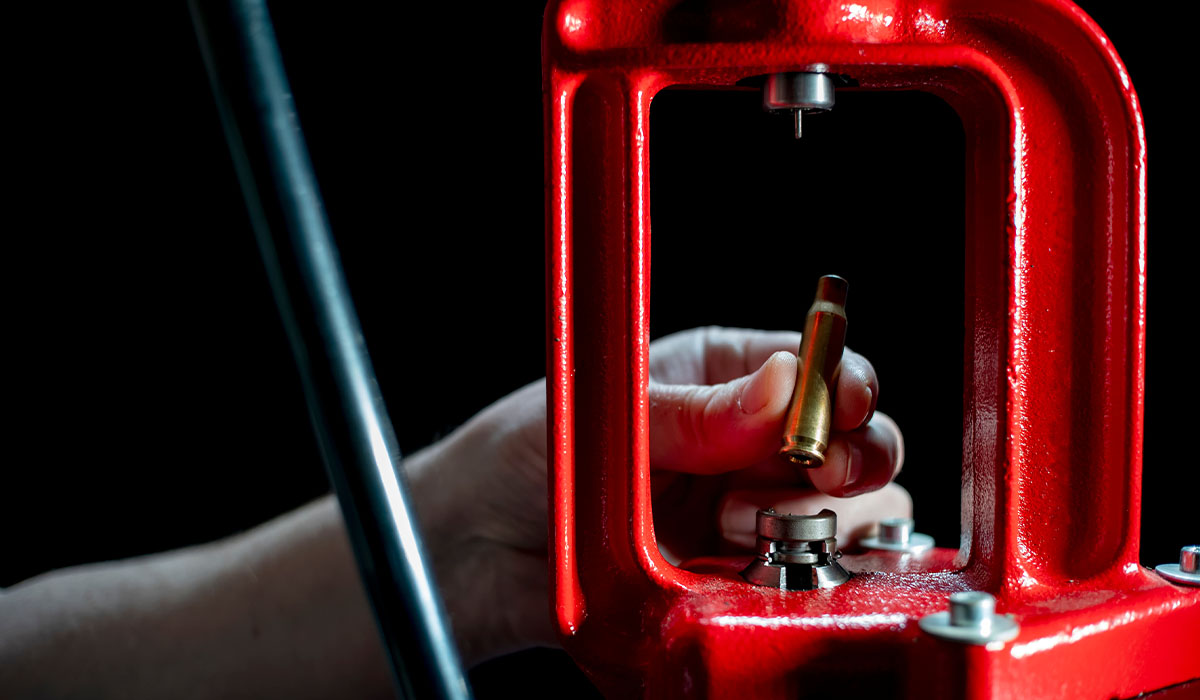Hopefully, the title hooked you because I must start with the obligatory cautions and disclaimers. First, if there is a caution note in a reloading manual, obey it. It is not there by accident; it is there because of an accident.
Many people, including myself, have been reloading for many years. We have learned to follow safety procedures, pay close attention to detail and produce high-quality ammo. All of us have opinions, many of them strong opinions on certain aspects of the process. Opinions are not facts. Always reference the manuals and documentation. The price of not doing so is too high.
I started reloading about 15 years ago. At first, it was an economic decision. I like to shoot. I like to shoot both handguns and long guns. Shooting as often and as much as I like was expensive (a box of .45 ACP was $12 a box), there had to be a way to reduce the cost and reloading, was it? Using “range brass” I was able to reduce the cost by 30%, to $8 a box.
Are Ammunition Shortages the Reason to Reload?

That reasoning may not hold water today. With ammunition shortages occurring with increasing frequency, components have become scarce and, therefore, expensive. Today, I can buy 230 grain .45 bullets for about 25 cents apiece.
Large Pistol Primers are listed at 8 cents apiece. My favorite everyday handgun propellant is Winchester 231. Today, a pound of 231 is listed for $33.49, or about 3.1 cents per charge. Put all of that together, and a box of .45 ACP using “range brass” is around $18. A box of .45 ACP today is about $30, so I can still save roughly 40% by reloading my own.
Problem is that all the components I listed in this paragraph are currently unavailable from my favorite online retailer (I failed to factor in shipping costs) and the cost in local shops and gun shows is what the market will bear, which is ugly.
So, while the economics can still work, the lack of availability of components makes it difficult to achieve those savings. There are folks out there that are sitting on a bunch of components for their personal use.
They have accumulated these components over time. It is like playing the stock market when the price goes down, buy. When the price goes up, hold. Never sell. Having done this in 2010, 2014, and 2017, I’m pretty much set to reload for the rest of my life. When you can buy it cheap, stack it deep.
However, while economics is a strong motivator, there are other reasons to reload. For long gun shooters, one of the best reasons is accuracy. Factory ammunition is well made and quality controlled.
Factory ammunition must be designed to fit all weapons in a particular caliber. It must fit the chambers that are a little long or a little short, not your exact chamber. For regular target shooting or hunting, this is fine.
For competition shooting, long-range shooting, and shooters in the pursuit of excellence, this is unacceptable. The only way to solve this problem is to load your own and tailor the load to bring the optimum accuracy out of your particular weapon.
The Science of Ballistics Comes Into Play

How do you select the correct bullet weight and design that performs best in your weapon? How do you select the best propellant and load to get the most out of that bullet from your weapon? This is called “working up a load.”
You can only achieve this by reloading. The feeling of success when you reduce your group size to a sub-minute of angle (MOA) by finding exactly the load your weapon likes best is overwhelming.
For those of us who shoot some less popular calibers (.41 Mag and .257 Weatherby Mag) reloading is almost the only way to procure ammunition. .257 Weatherby Magnum ammunition costs between $76 and $106 for 20 cartridges when you can find it.
However, this is a great varmint and small predator load, with a very flat trajectory at range. Others use it for larger games where its terminal ballistics pack the punch for most North American game animals.
I came into possession of this weapon by chance, researched it, and found that it is a very versatile load. It came with a box of ammunition, but after that, it was reloaded for it or let become a “safe queen.” I hit the gun forums and clearance sales, found the components, stockpiled them, and I don’t think I will ever run out.
.41 Magnum was another weapon I ran across. I researched it. I found that with the proper load you could come close to .44 Magnum (more like .44 Special) terminal ballistics with much less felt recoil.
The reloading dies for this caliber are the least popular selling dies around, and bullets and brass were easily available on clearance sales. It has become my “gator and bear” gun. Without the ability to reload, I would not be able to enjoy either of these weapons without paying high prices and being dependent on an unreliable supply chain.
To see a sample of the number of obscure calibers out there, just thumb through any reloading manual (I prefer Speer’s Manual) and you will see them from .17 caliber up through .50 caliber safari guns and all variations in between.
Reloading is the only way to guarantee a steady supply of ammunition for many of these off calibers in times of scarcity.
An issue that I am currently facing is shooting “full house” factory loads out of compact and subcompact concealed carry guns. When you get above .40 S&W the felt recoil on a small frame gun can make it uncomfortable to shoot and this affects accuracy.
My Glock 36 (.45 ACP) can be a real bear to handle. Out of my full-size 1911s, .45 ACP is pleasant to shoot, and I am very accurate with it. Out of my Sig Sauer Nitron 1911 .45 ACP, smaller frame, shorter sight radius, and a little more difficult. What is the solution?
Every .45 ACP does not have to be a 230-grain FMJ projectile traveling at 836 feet per second. So, I work up a load for a 185-grain hollow point at around 800 feet per second and my problem is solved. Reloading to need is the solution.
This issue is reinforced when trying to teach someone who is not familiar with firearms how to shoot. If they are afraid of the weapon, anticipating recoil, and not able to hit the broad side of a barn, they will have a hard time ever becoming a competent shooter.
The effective solution in this instance is loading 148-grain hollow base wadcutters (HBWC) in 38 Special. I like to put this load in +P cases because it loads better. The felt recoil is minimal, even out of small J frame revolvers.
The round is very accurate because it is a tailored target load. This allows the novice shooter to acclimate to shooting, practice good marksmanship habits, and see results that positively reinforce the experience. Once again, reloading is a solution.
My final argument for reloading is the art of the practice. The shooting knowledge gained in reloading is invaluable. It is a skill. It is passed down from one shooter to the next. Things are always changing and in reloading, those changes are found and capitalized upon by reloaders.
The equipment gets better. The components get better. Therefore, the shooting gets better. If we let this skill fade into obscurity, we have lost art and a capability in the shooting community that cannot be regained.
So, to answer the question posed in the title of this post—Optional or Required, I come down on the required side. Reloading is not for everyone, but serious shooters must strongly consider it if they plan to continue to shoot into their old age.
Factory ammunition prices will fluctuate, but due to basic economics, it will likely never be reasonable again. So, economically, it will always make sense when the components are available.
Loading for accuracy, uncommon calibers, load/platform matches, and training loads show the versatility and effect a skilled reloader can achieve. Most important is the skill itself. It can never be taken away from you.
Once you learn it, it is yours. Factory ammunition may dry up or become too expensive for regular shooters, but if you have procured the components and the skill, you will be shooting while others wish they were. In my book, that makes it REQUIRED.
Testimony of a Retired CSM in the US Army
By John T.
I’m a retired CSM from the US Army. My background was in Armor and Cavalry. I graduated from the US Army Tank Master Gunner School at Fort Knox, KY. I started shooting when I was 11 years old, and I have been shooting ever since.
I have been reloading since 2007. I reload both rifle and pistol in multiple calibers. I do not consider myself a master of the craft, but I am far from a novice. I also have a background in every US military rifle or sidearm since the M1911 and the M1903A3. I am also very familiar with light and heavy machine guns-.50 M2 HB, .50 Cal M85, 7.62 M60 Light Machine Gun, 7.62 M240 Light Machine Gun, and several variants.



